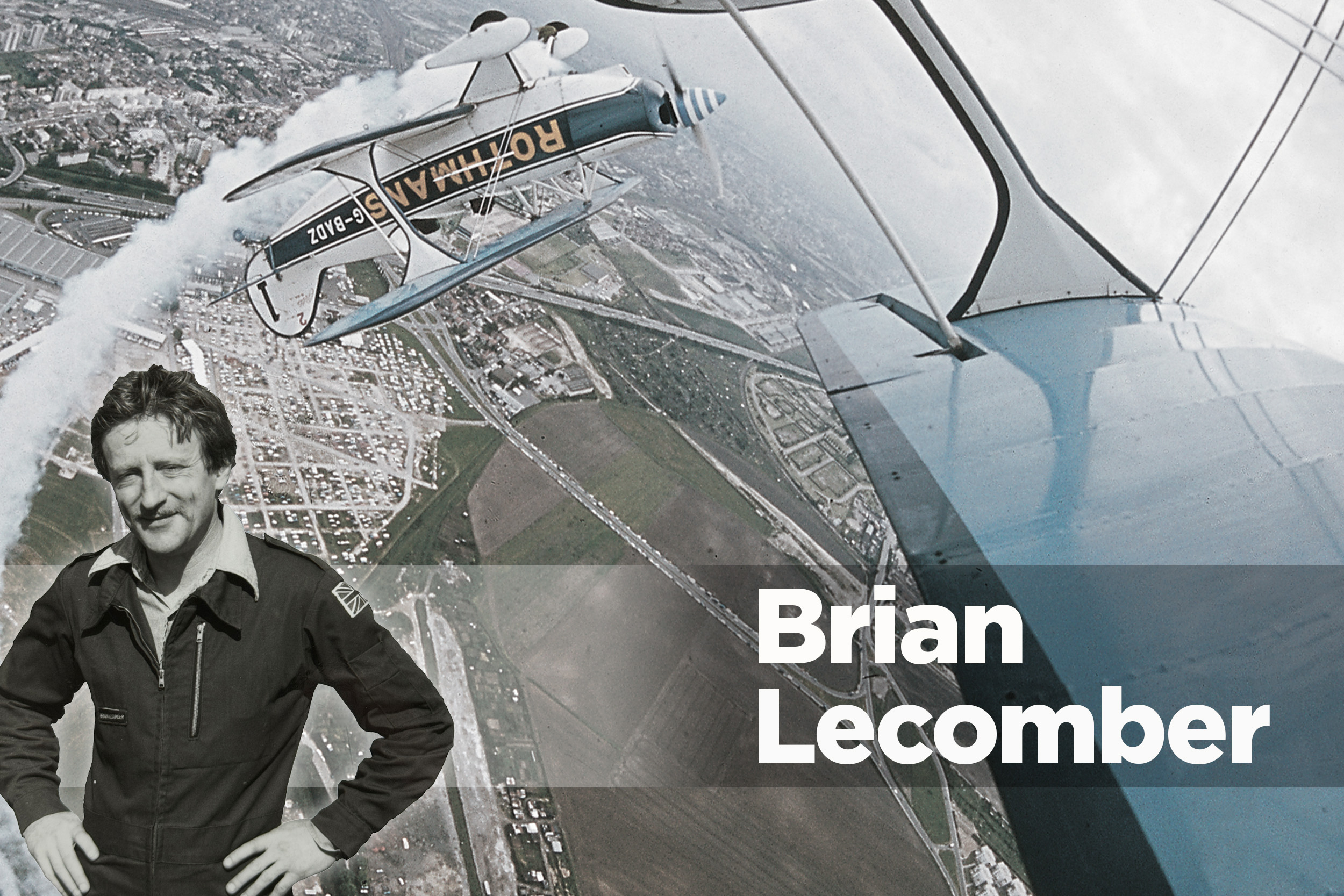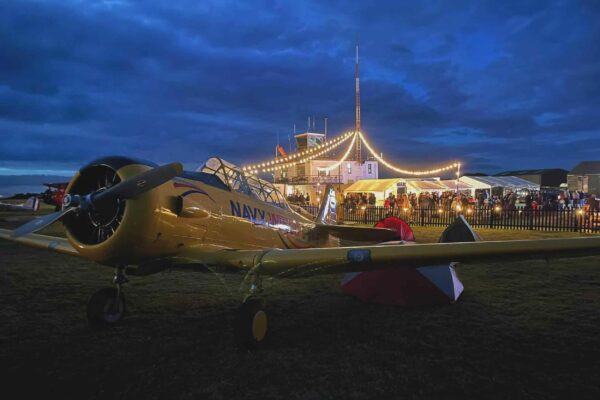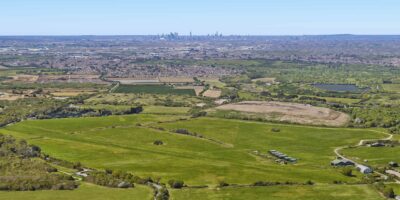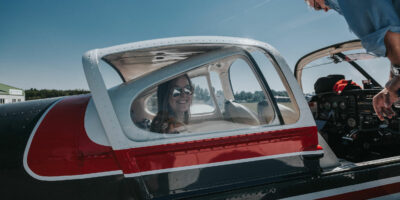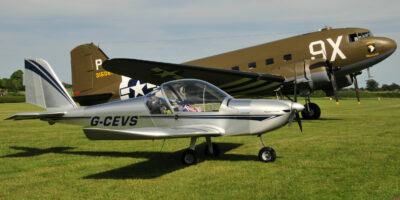Q 12: Tailwheel aircraft are more inclined to swing on landing than nosewheel types. Why?
a) A nosewheel has more steering authority than a tailwheel.
b) In the three-point attitude a taildragger’s rudder may be partially blanked-off by the fuselage.
c) In a nosewheel aircraft the centre of gravity (C of G) is ahead of the main wheels, while in a taildragger it is behind them.
Q 13: In the particular case of a level, balanced turn, g-load and stall speed both increase, but not in a linear fashion. Which of the following statements is true?
a) In a 30° banked turn the stall speed increases by 1.1%.
b) In a 60° level balanced turn you are pulling 2g and the stall speed doubles.
c) In a 75° banked turn you are pulling 4g and the stall speed doubles.
Q 14: You are flying a long, single-engine over-water flight at 10,000ft plus. Nightmare – the engine seizes. We all know our engine-failure checklists (of course we do, don’t we?), but how should our checklist differ in this particular circumstance?
a) Put on life-jackets first.
b) Trim for the glide, then get on the radio to ATC giving your position as accurately as you can, plus your intentions. Squawk Mayday.
c) Check engine gauges, mixture full rich, change fuel tanks, check mags, plus any other post-failure actions.
Q 15: You have accidentally spun out of an aerobatic manoeuvre. The world has gone whirling mad and all you really know is that you’re pointing downhill and rotating. You can’t make out which way you’re spinning – left or right – nor even whether it’s a positive spin or a negative. (Sounds impossible? It’s much easier done than you might think.) The first tenet of spin recovery is to slam on out-spin rudder. But which is out-spin rudder when you’re not sure which way you’re going? There’s one sure way of finding out, but it does require a bit of spare height and a few seconds. Not so long as reciting the Lord’s Prayer while waiting for terra firma to smack you in the gob, but it does take a bit of time and a lot of cool. What is this method?
a) Take your feet off the rudder pedals, put them back and press the pedal which resists you.
b) Watch the ground. Which way is the cowling going round it?
c) Practise reciting the Lord’s Prayer very quickly.
Q 16: What is deliberate-error navigation (now pretty much but not completely obsolete)?
a) Course calculation deliberately ignoring Magnetic Variation.
b) Course calculation deliberately intended to end up to one side of the target.
c) Course calculation deliberately intended to exaggerate the crosswind affect on a particular leg of flight.
Q.17: Manoeuvring Speed is the max airspeed at which you can apply full and abrupt movement of any control without over-stressing the airframe. Why, then, might an aerobatic aeroplane have a Manoeuvring Speed of 160kt but a max flick-roll entry speed of 140kt? (Slightly trick question.)
a) Manoeuvring speed is the speed at which you can apply full and abrupt movement of any ONE control (elevators, ailerons or rudder). A flick-roll requires abrupt movement of all controls together.
b) The definition of Manoeuvring Speed does not include the case of rolling g.
c) Manoeuvring Speed only applies to a brand new aeroplane – not one which has flown several thousand hours.
Q 18: Where will you find Cody’s Tree?
a) In the Natural History Museum.
b) In the Science Museum.
c) At Farnborough Aerodrome.
Q 19: You are hand-swinging an aeroplane and using chocks in front of the wheels. How do you lay out the chock-ropes?
a) So they pull the chocks out from under the wheels.
b) So they twist the chocks out from under the wheels.
c) So the ropes are laid out behind the main wing.
Q 20: Why is it considerately safer to hand-swing the propeller of a taildragger than a nosewheel machine?
a) For a right-handed person it is far more natural to swing a left-hand prop. (Which is probably why all Gipsy engines were left-hand tractors.)
b) If the prop-arc is tilted backwards, as in a taildragger, the act of swinging the prop tends to incline your body inertia away from same. If the prop-arc is vertical (on a nosewheel machine) your inertia tends to incline you towards it as you swing.
c) The taildragger may be intended to be hand-swung, and so the
propeller is positioned so that the compressions occur in a convenient position for swinging.
Answers
1. (b) The IAS at which the aircraft stalls at max gross weight with power at idle in 1g flight. Straight and level flight and 1g flight can be taken as the same thing for this purpose. The important point is that the aeroplane always thinks it’s travelling at its Indicated Air Speed and behaves accordingly.
2. (c) None. The wings are only interested in AOA – they do not give a fig for airspeed. If the stalling AOA is (say) 15°, then above 15° it is stalled; below 15° it is not. Quoted stall speed is for one specific circumstance – a 1g balanced stall. It is merely a handy reference speed to which to relate other speeds (best angle of climb and best rate of climb, for example). Any wing will stall at any air speed – it is the AOA which counts.
3. (c) Over the top (to the right) 99.9% of the time, but…
It is an almost universal rule that in an asymmetric stall (a stall with rudder on) an aircraft will flick or spin in the direction of applied rudder. In a slipping turn to the left you are opposing left bank with right rudder, so if you stall you’ll flick to the right (over the top of the turn). The 0.1% exception to this is at extremely high bank angles in an aeroplane with significant dihedral. A Stampe, for example, has 3° of dihedral on each set of wings. So if the upper wings in the turn are at exactly 90° to the horizon, the lower wings will have a slightly greater AOA due to the combined dihedral of 6°, and can therefore stall first – in which case the aircraft can flick the ‘wrong’ way, against the applied rudder and underneath the turn. Spin recovery is rapid because you already have out-spin rudder on – but the dangerous part is that you might rotate through the inverted before pointing more or less straight down. Not healthy if you are at 200ft at the time…
4. (a) Left rudder to start the nose moving as you roll into the turn; less left rudder once the bank is established; right rudder to slow the nose down and stop it as you roll out. See Q 5.
5. (a) To counteract aileron drag. As you roll into your left turn the left aileron rises into low-pressure airflow whilst the right lowers into the high-pressure zone. The drag therefore being greater on the out-of-turn (right) wing, left rudder is needed during the roll-in phase. Once the bank angle is established practically all roll-in aileron is removed, and with it the need for in-turn rudder diminishes. During the roll-out phase the opposite happens – aileron drag tries to perpetuate the turn, so you need out-turn rudder to keep the ball in the middle.
6. (b) In-spin aileron as well as out-spin rudder. Take a spin to the left. Obviously the left wing is more deeply stalled than the right. Apply out-spin (right) aileron and the left wing becomes even more deeply stalled. Hit left (in-spin) aileron and the left wing un-stalls much more readily.
7. (c) Stall it inverted. The design feature which works in erect flight – the Canard stalling before the main wing – works the wrong way round in an inverted stall. I for one decline to get involved without a bang-seat…
8. (b) Less stable. With flaps up, the lateral lift pattern is more or less the same across the whole span of each wing. With flaps down, the centre of lift on each wing moves inboard. Not usually a very pronounced effect, but it is there.
9. (c) During the first half of the roll the secondary affect of rudder is opposing the roll, while during the second half it’s assisting the ailerons.
The secondary effect of rudder is roll in the direction of yaw. In the first half of a roll (say) to the left you need right rudder to keep the nose up. In the second half this translates into left rudder, so the secondary effect tends to speed up the roll.
10. (a, b and c). Score 5 points for each correct answer. The reason for moving on to four-point rolls as soon as possible is two-fold; firstly it’s easier to spot the errors, and secondly you more or less have to get the attitudes right for the hesitations.
11. (a) Gyroscopic reaction and P factor.
Torque reaction and slipstream helix are common to all types. P factor (asymmetric blade effect) affects the start of the take-off roll in a tail-dragger due to the prop-disc being ‘laid back’ in the three-point attitude, thus giving the down-going prop blade a greater AOA than the upcoming. Lifting the tail produces the fourth effect, gyroscopic reaction. You are effectively tilting the prop-disc forwards, and being the good gyroscope it is, the ‘tilt’ force precesses 90° in the direction of rotation and comes out as a yawing factor. All these effects tend to swing the aircraft in the opposite direction to the prop rotation – i.e. with a right-hand prop the potential swing is to the left. (Or more often whichever direction the pilot chooses to over-correct it.)
12. (c) In a nosewheel aircraft the centre of gravity (C of G) is ahead of the main wheels, whilst in a taildragger it is behind them. If a swing even thinks about developing, the one thing you can be sure of is that the C of G will try to carry straight on. In a nosewheeler this means the C of G is ‘towing’ the main wheels, therefore trying to keep things straight. In a taildragger the C of G is ‘pushing’ the main wheels and will inherently try to overtake them if a swing develops. It’s like the difference between pushing a wheelbarrow or pulling it.
13. (c) In a 75° banked turn you are pulling 4g and the stall speed doubles.
Turn bank – % stall speed – increase g loading factor
30° 115% + 1.07
45° 119% +1.41
60° 141% + 2.00
75° 200% + 4.00
14. (b) Trim for the glide, then get on the radio to ATC giving your position as accurately as you can, plus your intentions. With reference to (a), you should have put your life-jackets on before take-off for any single-engine over-water flight. The radio call rises way up the priority list because you have your maximum radio range right now.
15. (a) Take your feet off the rudder pedals, put them back and press the pedal which resists you. This will always work for the rudder part of the recovery, which is the main thing. If it doesn’t, then let go of the stick and resort to answer (c).
16. (b) Course calculation deliberately intended to end up to one side of the target. You are flying towards a small target over ocean or featureless terrain. The target doesn’t turn up when your calculations say it should. Do you turn left to search for it – or right? Deliberate error navigation means you have deliberately aimed 10 miles (say) south of the target, so your best bet is to turn north. Not infallible by any means, but better than tossing a coin. Works best when approaching a line-feature (coast, railway, etc).
17. (a and b). Score 5 points for each correct answer. Flick-roll entry almost always requires abrupt full rudder plus abrupt application of elevator and aileron (probably not full, but certainly abrupt). Manoeuvring Speed can therefore be a slightly misleading term for a highly aerobatic aeroplane. Answer (c) is also true in real life, but theoretically a certain amount of airframe deterioration is allowed for.
18. (c) At Farnborough Aerodrome. Cody’s tree was the tree where Samuel Cody tethered his flying machine for thrust tests before making the first flight in the UK in October 1908. It was then the Military Balloon Factory on Latham’s Plain. The present Cody’s tree is a metal replica.
19. (b) So they twist the chocks out from under the wheels.
There have been very few instances of a wheel-chock whipping up into the propeller as it’s yanked out by an over-muscled and under-brained helper. The correct layout of the chock rope makes this very much more unlikely.
20. (b and c). Score 5 points for each correct answer. These factors have caught several people out over the years, but are rarely mentioned.
How did you do?
120 points – Gold medal. You are devious, suspicious and cunning – so almost certainly a good pilot.
100/120 points – Silver medal. Good, sound grasp of the subject.
80/100 points – Creditable Bronze.
50/80 points – um, well call it creditable Tin.
Below 50 points – Have you considered the attractions of taking up… golf?


